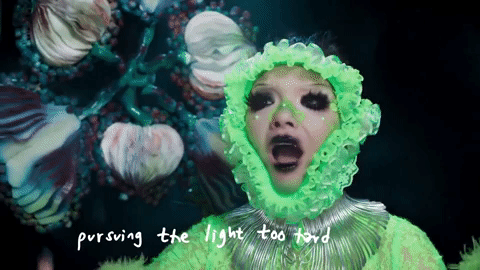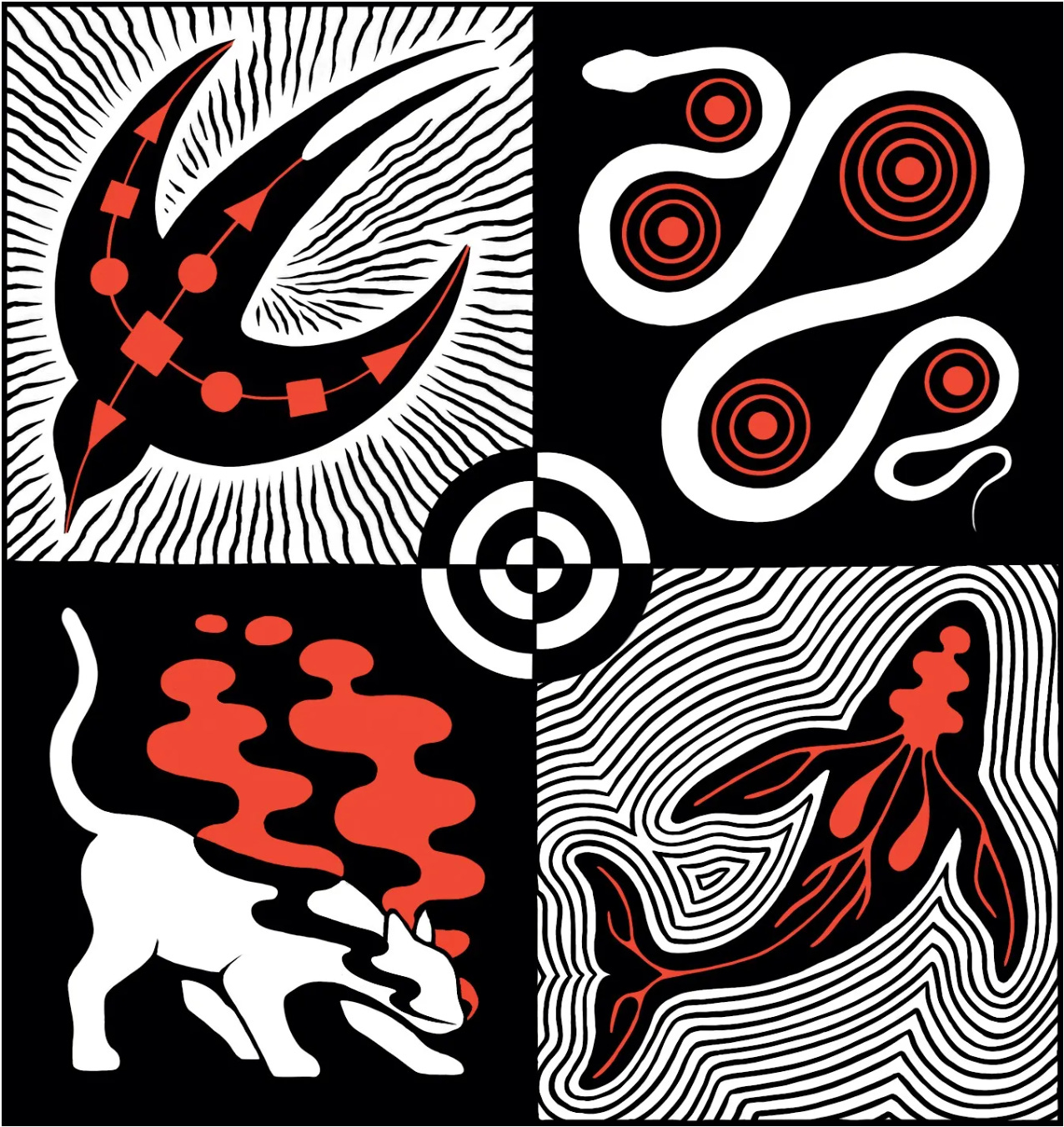🐋✨The Nexialist #0086
Nonhuman Perceptions | Umwelt | Ask Nature | The Drowned Giant | Are Emotions Universal? | Situationships | Setting Boundaries | Hope is a Muscle
Welcome to another week of a cozy brain-bath with me, The Nexialist! (Today a bit later due to human&technical issues ❤️
Come in, grab a coffee/tea and let our brains cuddle in the next 3-10 minutes.
Recently I’ve noticed a new behavior when I’m getting started with a new research process for work (or not) and I would like to share it with you: the search field in my e-mail box (as well as The Nexialist archive.) Sometimes I remember who sent it and that helps me filter the search, sometimes I just try different keywords, and that works as well. It’s some kind of mining through my own archive, without the legion of algorithms. I highly recommend it, especially if you sign up for great quality newsletters.
This week’s Nexialist has nothing to do with this, so I’ll just leave you to it. Enjoy! 🫀✨
1 year ago » 🎁✨The Nexialist #0038 : The Perfectionism Trap | Normosis: The Pathology of Normality | Social Cooling | Solar Power | Artist Imperfection
🐋Nonhuman Perceptions
Last week I was doing another wonderful playshop with the amazing folks at Dancing Fox for the World Animal Protection’s movement Unleashing the Wild. As always, we had inspiring mornings together, and a great deal of knowledge and sensitivity was shared. One of them of Ed Yong’s new book “An Immense World: How Animal Senses Reveal the Hidden Realms Around Us.”
Have you ever thought about how different animals perceive and sense the world? That is what Ed Yung does in his book, and it was mindblowing just to read through these two articles about it. So many beautiful stories of whales communicating and disturbing stories of humans experimenting with animals. It is also humbling to think of how limited we can be considering all these different senses these nonhumans (or more-than-humans) have.
Yes, we can never know what it’s like for a bat to be a bat (or for a knifefish to be a knifefish). But we can learn a lot about echolocation and electrolocation and the many other methods that animals use to sense their surroundings. And this experience is, for us, mind-expanding.
Read: The Strange and Secret Ways That Animals Perceive the World by Elizabeth Kolbert | The New Yorker
Read: ‘An Immense World’ Is a Thrilling Tour of Nonhuman Perception, by Jennifer Szalai | NYT
🐝Umwelt
I had heard this one before, but it was hidden somewhere in my mind, so the excitement was like finding cash in the pocket of an old jacket. A word to help us understand that different creatures perceive things differently.
In the semiotic theories of Jakob von Uexküll and Thomas A. Sebeok, umwelt (from the German Umwelt meaning "environment" or "surroundings") is the "biological foundations that lie at the very epicenter of the study of both communication and signification in the human [and non-human] animal". The term is usually translated as "self-centered world". Uexküll theorised that organisms can have different umwelten, even though they share the same environment. The term umwelt, together with companion terms Umgebung (an Umwelt as seen by another observer) and Innenwelt (the mapping of the self to the world of objects), have special relevance for cognitive philosophers, roboticists and cyberneticians because they offer a potential solution to the conundrum of the infinite regress of the Cartesian Theater.
🕸Ask Nature
A beautiful biomimicry database. One of those websites you can go an explore for inspiration or look for what you need. I loved the Biological Strategies where they can have “curated more than 1700 strategies of living things that can serve as inspiration for human innovation.”
The living world holds answers for us to create a more resilient, regenerative, and beautiful world. It is time to quiet our cleverness, to observe and listen deeply, and reconnect to nature’s wisdom by asking, “How does nature solve this?”
👁The Drowned Giant
Elizabeth Kolbert’s opens her piece about An Immense World with a story about a stranded whale who gets taken apart by humans. Immediately I was taken to this larger-than-life episode from Love, Death + Robots. They usually share a video on their channel telling a bit more about the director. If you haven’t seen them, it adds another layer of emotion and knowledge to the episodes.
🪐Are Emotions Universal?
Lana Ruff kindly e-mailed this to me a few weeks ago and I thought I would squeeze this in here. Nikhil Krishnan writes about Dutch psychologist Batja Mesquita’s book “Between Us: How Cultures Create Emotions.” It connects, in a way, to the Umwelt. As if each of us has a different “emotion umwelt” on how we experience the world through our emotional lens.
Mesquita wants us to consider this alternative model. Instead of treating emotions as mental and “inner,” perhaps we should conceive of them “as acts happening between people: acts that are being adjusted to the situation at hand,” rather than “as mental states within an individual.” Instead of seeing emotions as bequeathed by biology, we might see them as learned: “instilled in us by our parents and other cultural agents,” or “conditioned by recurrent experiences within our cultures.” In this model of emotions, they are “OUtside the person, Relational, and Situated”—ours.
Read: How Universal Are Our Emotions? by Nikhil Krishnan, The New Yorker
🤝Situationships
Well, you know my love for these new terms, and this one made me giggle because it is true:
Armstrong argues situationships are popular because they challenge the ‘relationship escalator’: the idea that intimate partnerships are meant to have a linear structure with the goal of hitting conventional relationship milestones, such as co-habitation, engagement and marriage. The concept of the situationship goes against “this notion that being with someone where it’s not going anywhere is ‘wasting time’”, she says – a sentiment she notes Gen Z is increasingly embracing. Rather, people in these arrangements willingly opt into the grey area of an undefined relationship. According to Armstrong, they believe “the situationship, for whatever reason, works for right now. And for right now, I'm not going to worry about having a thing that is ‘going somewhere’”.
Read: ‘Situationships’: Why Gen Z are embracing the grey area, by Casey Noenickx, BBC
🫀Setting Boundaries
This Vox Conversations hit really close to home. Nedra Glover Tawwab is a therapist, relationship expert, and bestselling author of Set Boundaries, Find Peace, and she knows what she’s talking about. It was so relatable because not only do I have trouble setting boundaries, but I have a problem even knowing what my boundaries are (which apparently is quite common). Coming from a “go with the flow” culture, many times we learn that boundaries are walls, but now, in my 30s, I am learning that they actually make relationships better. (I just realized that the person interviewing her, Julia Furlan, is Brazilian, so maybe that’s why it felt so relatable!)
Boundaries are statements that make you feel safe and comfortable in your relationships. Sometimes it is behaviors that make you feel safe and comfortable.
Read: Setting boundaries is more than just saying “no” by Julia Furlan, Vox
💪🏼Hope is a Muscle
Hope is a muscle that allows us to connect.
Loving the new releases from Björk, always bringing us something fresh and pulsing.
Have a connected rest of week/weekend! 🧠✨
🫀If anything made your brain tingle, click like, and please share it with your friends. It helps The Nexialist to reach more curious minds.
🥰If someone amazing sent it to you, tell them you love them, and you can subscribe at thenexialist.substack.com.
❓If you want to know what a Nexialist is, click here.
💌I want to know what you think/who you are! Your feedback is highly appreciated, you can e-mail me or fill in this short survey. Thank you! 🙏🏻
🔌Let’s Collab?
I truly believe innovation comes from bringing improbable areas together, and that’s why I called this project The Nexialist. Some sectors are known to be self-referencing and hermetic. Sometimes teams are on autopilot mode, focused on the daily grind, which hinders innovation. As a Nexialist, I like to burst these bubbles, bringing references from different areas, and maintaining teams inspired and connected to the Zeitgeist.
I offer inspiration sessions, called Brainsparks, creative desk research (Zeitgeist Boost), Plug’n’Play deals for workshops and sprints, and other Bespoke formats. If you want to know more about this, send me an e-mail with your challenge(s) and we can figure something out together. Check out my website and some work I’ve done below:









